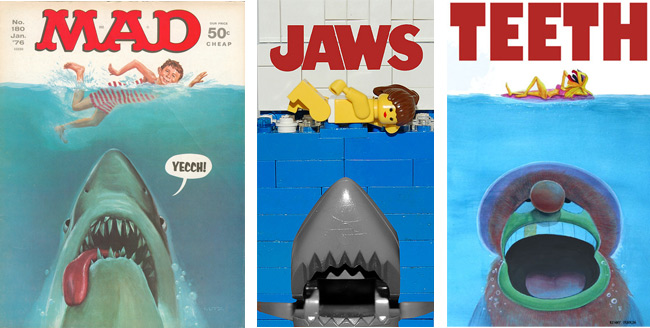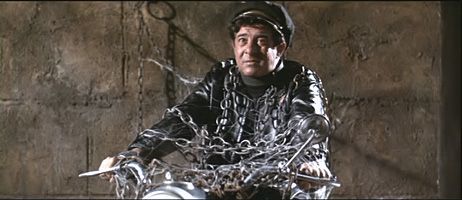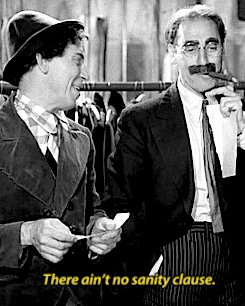This blog post is part of the What A Character! Blogathon hosted by Kellee at Outspoken & Freckled, Paula at Paula’s Cinema Club and Aurora at Once Upon a Screen
One of the selling points of a great character actor is his ability to be cast in virtually any role, and have people leaving the theater remembering the performance, and not the actor. It’s precisely why so many great character actors go nameless – you know their face, but their name will often slip your mind. It’s the whole reason we see marathons of character actors given names like “That Guy!” Thursdays.
Lloyd Corrigan is very much an example of that situation. With 172 acting credits in both large screen and small on his IMDB resume, he’s not a name that the average film fan will know, but he’s certainly one they’ve seen.
Before his prolific acting career, Corrigan started as a writer and director for the silent films, including a female-centric version of the perennial Brewster’s Millions story, and a trilogy of Fu Manchu films, starring Werner Oland as The Demon Doctor. A short he wrote and directed, La Cucaracha, won the best comedy short subject for 1935.
As an actor, he jumped regularly between comedy – he appeared in a couple Bob Hope comedies like The Ghost Breakers and Son of Paleface, and a few of the Bowery Boys films– and drama, like the 1946 noir film The Chase, where he plays a business rival of the main character who meets a grisly death via a large dog in a locked wine cellar. He appeared in several of the Boston Blackie series of films in a recurring role of millionaire Arthur Manleder. He was in the Jose Ferrer version of Cyrano De Bergerac as Ragueneau the pastry chef.
In the Noir classic The Big Clock, Lloyd plays a radio actor who comes to the aid of suspected murderer George Stroud (Ray Milland), who is also in charge of the investigation to find said murderer. Corrigan takes on a number of roles to aid Stroud, including a false suspect, one “Jefferson Randolph”, an anxious witness happy to describe said suspect, and later in the film as a police inspector, with the hopes of keeping the real suspect under control.
In Whistling in the Dark, the first of the Red Skelton trilogy, Corrigan plays Harvey Upshaw, target of a wild murder plot. He’s a harmless married man who’s intended to receive a sizable pile of cash from a maiden aunt, much to the consternation of Conrad Veidt, who was expecting the money to be bequeathed to his supernatural scam. Skelton plays a radio detective who gets involved in the goings on and must use his radio show as a live attempt to contact Upshaw, who is on an airplane with a man who plans to kill him with poisoned tooth powder. Did I mention this was a comedy?
In amongst all the comedies, Corrigan still made appearances in major dramas, including The Manchurian Candidate, where he played newspaper magnate Holborn Gaines, employer and friend of Medal of Honor winner and potent brainwashing subject Raymond Shaw (Laurence Harvey). Gaines becomes close with Shaw after discover they share an abiding hatred of Shaw’s father-in-law, Senator John Iselin (James Gregory) and his wife, Raymond’s mother (Angela Lansbury). Sadly, as a test of Shaw’s conditioning, he is instructed to kill Gaines.
In addition to an appearance as the Mayor in It’s a Mad Mad Mad Mad World, one of Corrigan’s last regular roles was a one-season sitcom called Hank, about a hard-working young man who’s trying to make his way through college with a series of small jobs and a steady string of auditing classes.
Lloyd Corrigan’s appearances in films are often brief – as a character actor, his job is to further the story, not be the story. He deserves more recognition, in name as well as face, and we can but hope that pieces like this, we can help fix that problem.
One of the selling points of a great character actor is his ability to be cast in virtually any role, and have people leaving the theater remembering the performance, and not the actor. It’s precisely why so many great character actors go nameless – you know their face, but their name will often slip your mind. It’s the whole reason we see marathons of character actors given names like “That Guy!” Thursdays.
Lloyd Corrigan is very much an example of that situation. With 172 acting credits in both large screen and small on his IMDB resume, he’s not a name that the average film fan will know, but he’s certainly one they’ve seen.
Before his prolific acting career, Corrigan started as a writer and director for the silent films, including a female-centric version of the perennial Brewster’s Millions story, and a trilogy of Fu Manchu films, starring Werner Oland as The Demon Doctor. A short he wrote and directed, La Cucaracha, won the best comedy short subject for 1935.
As an actor, he jumped regularly between comedy – he appeared in a couple Bob Hope comedies like The Ghost Breakers and Son of Paleface, and a few of the Bowery Boys films– and drama, like the 1946 noir film The Chase, where he plays a business rival of the main character who meets a grisly death via a large dog in a locked wine cellar. He appeared in several of the Boston Blackie series of films in a recurring role of millionaire Arthur Manleder. He was in the Jose Ferrer version of Cyrano De Bergerac as Ragueneau the pastry chef.
 |
| Corrigan helps Ray Milland and Maureen O’Sullivan in The Big Clock |
In Whistling in the Dark, the first of the Red Skelton trilogy, Corrigan plays Harvey Upshaw, target of a wild murder plot. He’s a harmless married man who’s intended to receive a sizable pile of cash from a maiden aunt, much to the consternation of Conrad Veidt, who was expecting the money to be bequeathed to his supernatural scam. Skelton plays a radio detective who gets involved in the goings on and must use his radio show as a live attempt to contact Upshaw, who is on an airplane with a man who plans to kill him with poisoned tooth powder. Did I mention this was a comedy?
 |
| Holborn Gaines, relaxing in his dead wife's housecoat in The Manchurian Candidate |
 |
| Corrigan had quite the resume on television as well - here he is on an episode of Wanted: Dead or Alive |
Lloyd Corrigan’s appearances in films are often brief – as a character actor, his job is to further the story, not be the story. He deserves more recognition, in name as well as face, and we can but hope that pieces like this, we can help fix that problem.
























_01.jpg)





















